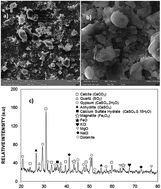Dust removal from a hydrophobic surface by rolling fizzy water droplets
Abstract
Here, environmental dust cleaning from an inclined hydrophobic surface by rolling liquid droplets has been studied and the influence of fluid droplets on the dust removal rate has been examined. The distilled and carbonated water droplets at different volumes were incorporated and the inclination angle of the dusty hydrophobic surface on the droplet motion was explored in the experiments. We demonstrated that the carbonated water droplet had higher translational velocity than the distilled water droplet on the dusty hydrophobic surface. The bubbles formed around the droplet surface acted as gas cushions at the interface between the solid surface and the fluid droplet while lowering the friction and pinning forces and enhancing the droplet translational velocity on the surface. Collected environmental dust has various components, some of which can dissolve in water while creating resorption/nucleation centers for bubble formation in the carbonated water droplet. The interaction between the bubbles and the dust particles at the liquid–solid interface enhanced the rate of dust particle movement into carbonated water. For a small-volume droplet (20 μL) at a low surface inclination angle (δ = 1°), the rolling motion of the distilled and carbonated water droplets ceased on the hydrophobic surface at early periods.

- This article is part of the themed collection: 2020 RSC Advances HOT Article Collection


 Please wait while we load your content...
Please wait while we load your content...